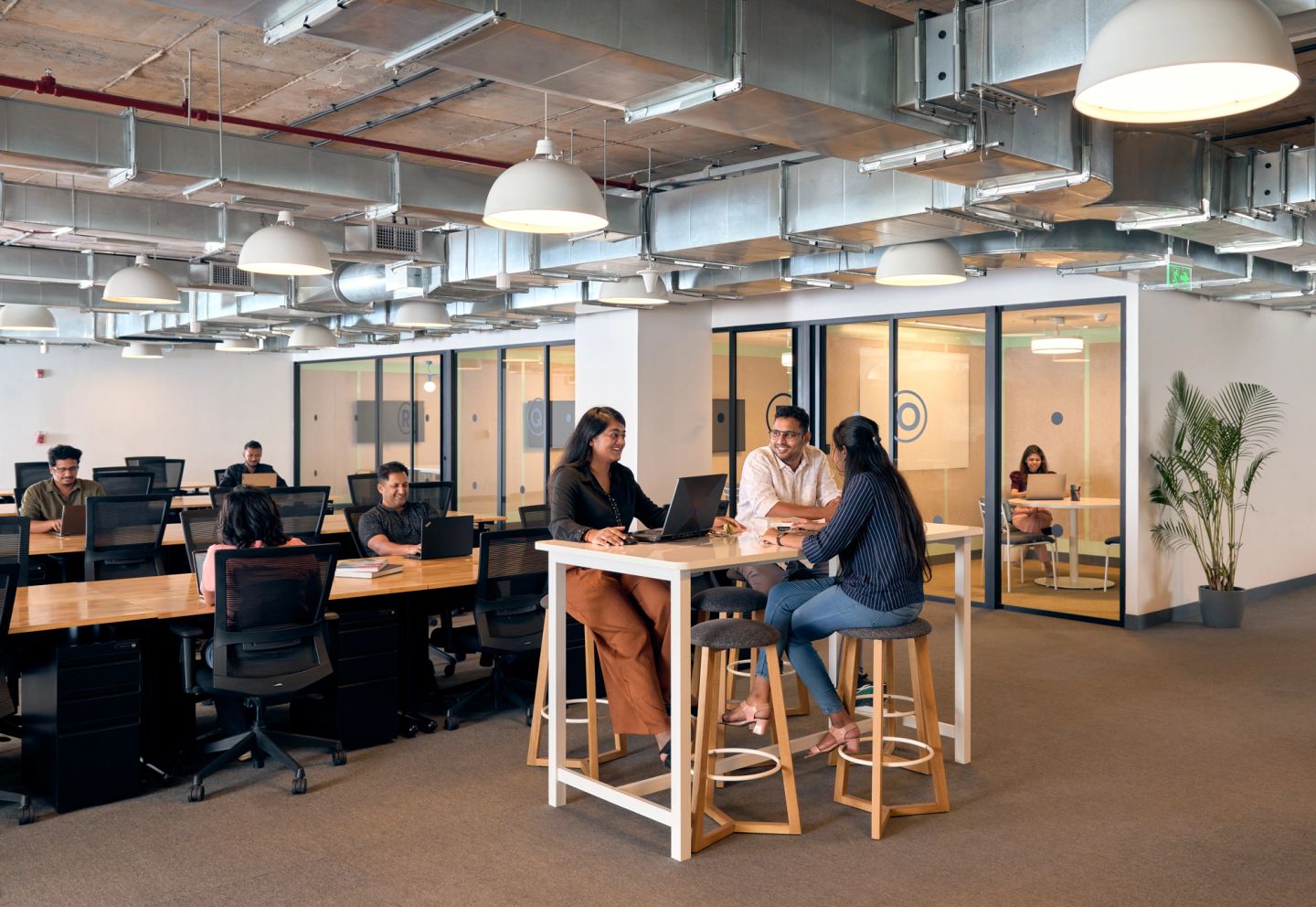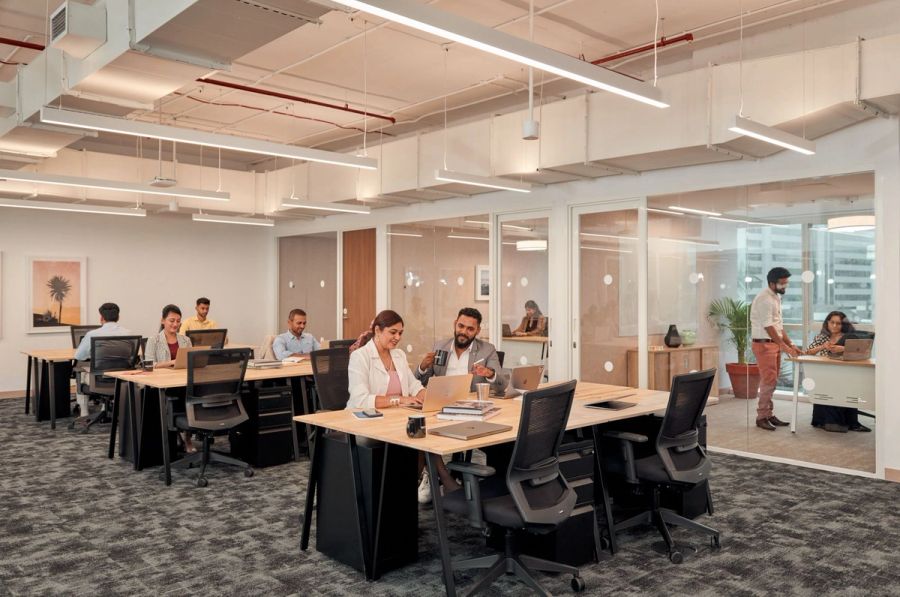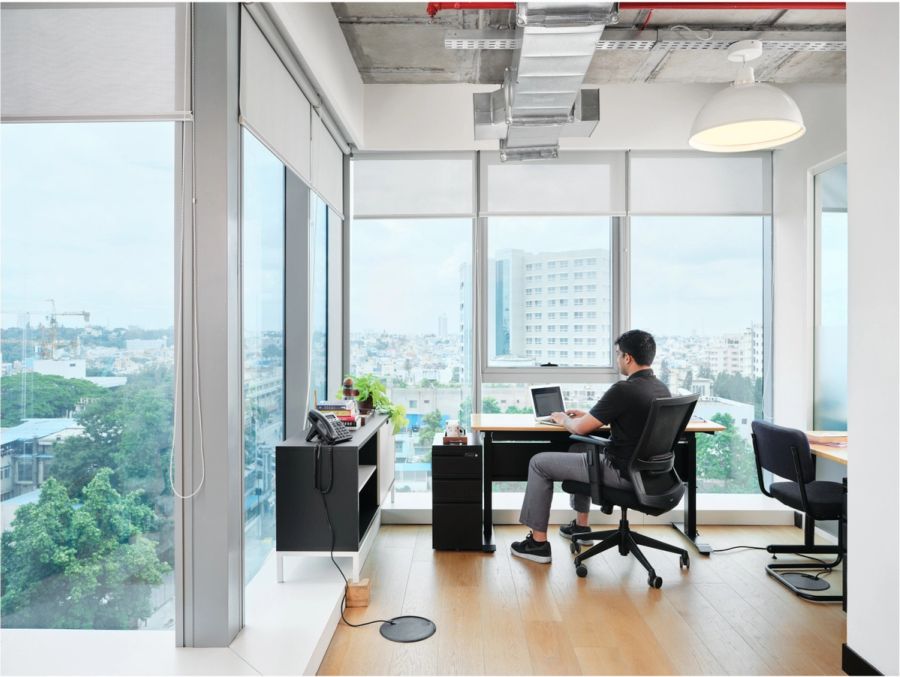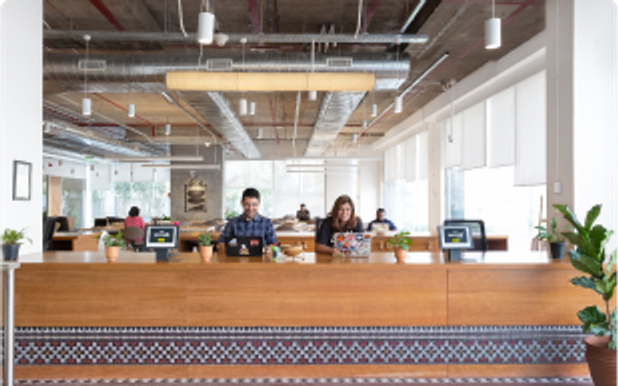CULTURE & COMMUNITY
What is Workplace Flexibility?

Flexibility in the Workplace means an employee can choose their work hours. Learn more about it and explore workplace flexibility examples and benefits here at WeWork.
The modern work culture is an ever-evolving landscape, and workplace flexibility is now emerging as the key to success, for employees and employers alike. Companies are now striving to adapt to the changing market dynamics and foster a flexible workplace environment.
In this blog, we will understand the meaning of workplace flexibility, and its benefits, and learn how coworking workplaces like WeWork can help in embracing flexibility in the workplace.
Understanding workplace flexibility
Workplace flexibility is the ability of companies and employees to mutually negotiate and agree on variations in when, where and how work will be done. This includes flexible hours, remote work options, job-sharing arrangements, and more. This offers adaptability and flexibility in the workplace, keeping the diverse needs and preferences of all individuals in mind.
Importance of flexibility in the workplace
In today's fast-paced & interconnected world, here are some of the ways in which embracing flexibility can provide rich dividends:
- Enhanced work-life balance: Having flexible work arrangements helps employees balance their personal and professional responsibilities, ensuring job satisfaction and overall well-being. In today’s world, where the boundaries between work and personal life can get blurry, maintaining this balance can be crucial.
- Improved employee retention and recruitment: companies offering flexibility are more attractive to people who are looking for more autonomy and control over their professional lives. In a competitive talent market, workplace flexibility can be a decisive factor in attracting and retaining top talent.
- Increased productivity and engagement: When employees have the freedom to choose when and where they work, they are more likely to be motivated, focused, and productive. Flexibility at the workplace offers a sense of trust and autonomy, empowering employees to take ownership of their work and approach tasks with greater energy and enthusiasm.
- Cost savings: Flexible work arrangements can result in savings costs for both employers and employees. Reduced commuting expenses, lower office overheads, and decreased absenteeism can contribute to a more efficient and cost-effective business model.
Workplace flexibility- examples
Flexibility in the workplace can be offered in various forms, tailored to the unique needs and preferences of individuals and organisations. Here are some examples:
- Flexible hours: Allowing employees to adjust their work hours to accommodate personal commitments or preferred working times.
- Remote work: Providing employees with the option to work from home or other locations outside the traditional office setting.
- Compressed workweeks: Reducing the standard five-day workweek into fewer, longer days to give employees more days off.
- Job sharing: Sharing a full-time position between two or more employees, each working part-time hours.
- Online communications: Utilising technology to enable virtual communication, reducing the need for physical presence in the office.
Overcoming challenges of workplace flexibility
While the benefits of workplace flexibility cannot be denied, implementing and managing flexible work arrangements can be challenging for companies. It is essential to address these challenges to ensure the success of flexible workplace initiatives. Here are some common challenges and strategies for overcoming them:
1. Maintaining collaboration and communication
One concern regarding flexible work arrangements is the potential impact on collaboration and communication among team members. When employees are located in different locations or working different schedules, maintaining effective communication can become more challenging.

Strategy: Invest in communication tools and platforms that facilitate real-time collaboration and virtual meetings. Encourage regular check-ins and team meetings to ensure everyone remains aligned and informed. Build a culture of open communication and transparency, where team members feel comfortable reaching out for support or clarification.
2. Managing workload and expectations
In a flexible work environment, it can be challenging to monitor and manage employee workload and performance. Without clear guidelines and expectations, employees may struggle to prioritise tasks effectively or feel overwhelmed.

Strategy: Establish clear performance objectives and metrics for remote and flexible workers, aligning them with organisational goals. Encourage active communication between managers and employees to set realistic expectations and discuss workload distribution. Provide training and resources to help employees manage their time and workload efficiently, emphasising the importance of work-life balance.
3. Ensuring data security and compliance
While remote working can be convenient, it also comes with its share of risks, especially regarding the protection of sensitive data and adherence to regulatory requirements. Without the right precautions in place, organisations may be vulnerable to data breaches or legal repercussions.
Strategy: Implement cybersecurity measures like encryption, multi-factor authentication, and secure VPN connections to protect data integrity and confidentiality. Develop comprehensive remote work policies and procedures that address data handling, privacy regulations, and compliance standards. Provide ongoing training and awareness programs to educate employees about best practices in cybersecurity and their role in safeguarding company information.
4. Promoting employee engagement and well-being
Maintaining a sense of connection and belonging can be challenging in a flexible work environment, where employees may feel isolated or disconnected from their colleagues. Moreover, remote work can blur the boundaries between work and personal life, leading to burnout and decreased overall well-being.

Strategy: Have a supportive and inclusive work culture that values employee well-being and recognises the importance of social connection. Organise virtual team-building activities, wellness initiatives, and social events to nurture relationships and boost morale. Encourage managers to check in regularly with remote team members and provide opportunities for feedback and recognition. Promote work-life balance by setting clear boundaries around work hours and encouraging employees to take regular breaks and time off.
5. Evaluating and iterating on flexible work policies
Flexibility in the workplace is not a one-time implementation but an ongoing process of adaptation and refinement. It is essential for companies to regularly evaluate the effectiveness of their flexible work policies and make adjustments as needed based on feedback and evolving business needs.
Strategy: Get regular feedback from employees at all levels of the organisation to understand their experiences with flexible work arrangements and identify areas for improvement. Analyse key metrics, such as productivity, employee engagement, and retention, to measure the impact of flexible work policies on organisational performance.
Also Read: How Flexible Workspaces can meet the demands of today and tomorrow
How co-working spaces facilitate workplace flexibility
Flexible working spaces like WeWork offer a dynamic environment that aligns seamlessly with the principles of workplace flexibility. Here's how:

- Diverse workspaces: Co-working spaces provide a range of options, from open collaborative areas to private office spaces, allowing individuals and teams to choose the setting that suits their needs and preferences.
- On-demand access: With options like the WeWork Day Pass, you can access premium office facilities and amenities on a flexible, pay-as-you-go basis, eliminating the need for long-term commitments or fixed leases.
- Community engagement: Flexible working spaces foster a sense of community and collaboration among members, providing opportunities for networking, knowledge sharing, and professional development.
- Tech-enabled solutions: Flexible working spaces leverage cutting-edge technology and infrastructure to support remote work and virtual collaboration, ensuring seamless connectivity and productivity.
Best practices for implementing workplace flexibility
To harness the full potential of workplace flexibility, organisations can adopt the following best practices:
- Clear communication: Establish transparent policies and guidelines regarding flexible work arrangements to ensure clarity and consistency for all stakeholders.
- Trust and empowerment: Build a culture of trust and empowerment that encourages employees to take ownership of their work and manage their time effectively.
- Performance measurement: Focus on outcomes and results rather than physical presence or hours worked.
- Flexibility for all: Recognise that flexibility is not a one-size-fits-all solution and be open to accommodating diverse needs and preferences across the workforce.
Embrace workplace flexibility for success
Workplace flexibility is not just a trend but a strategic solution for companies that want to thrive in today's dynamic business environment. By embracing flexibility in the workplace and leveraging the diverse offerings of flexible working spaces, businesses can unlock various benefits, from enhanced productivity and employee satisfaction to cost savings and competitive advantage. Embrace flexibility, and pave the way for a brighter, more adaptable future of work.
Also Read: Flexible workspaces redefine the traditional office in a post-covid world
Related Blogs:

CULTURE & COMMUNITY
Many professionals now deal with stress regularly, with tight deadlines and long work hours in a stressful workplace. In such a demanding and fast-paced work culture, mindfulness can be an effective strategy.

CULTURE & COMMUNITY
A buddy system involves assigning a new employee a coworker buddy. The buddy, who is an experienced worker, guides the new employee for the first weeks or months of work.

